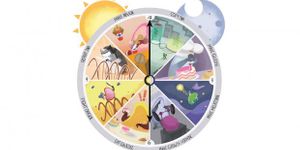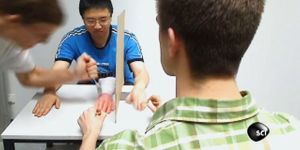Diseases of the airways -- emphysema, bronchitis, asthma and cystic fibrosis -- are the second leading cause of death worldwide. More than 35 million Americans alone suffer from chronic respiratory disease.

Weizmann Institute of Science researchers in Rehovot, Israel, think they have a way to relieve the suffering of these patients. The results of their study, which recently appeared in Nature Medicine, according to a press release, involve using embryonic stem cells to repair damaged lung tissue.
Prof. Yair Reisner of the Weizmann Institute's Department of Immunology and his colleagues posited that certain stem cells normally residing in the lungs are very similar to those in the bone marrow. In each organ, the stem cells are concentrated in special compartments that contain all the provisions that stem cells require. According to Prof. Reisner, "That understanding suggested to us that we might be able to apply our knowledge of techniques for transplanting bone marrow stem cells to repairing lung tissue."
Prof. Reisner's research is supported by the Leona M. and Harry B. Helmsley Charitable Trust; the Steven and Beverly Rubenstein Charitable Foundation; and Roberto and Renata Ruhman, Brazil. Prof. Reisner is the incumbent of the Henry H. Drake Professorial Chair of Immunology.
Bone marrow transplant is based on the ability of stem cells to navigate through the blood to the appropriate place and the evacuation of other materials to make room for the transplanted stem cells. While Prof. Reisner and his group thought it might be possible to introduce new stem cells into the lungs, they needed to find a source of rare lung stem cells suitable for transplanting.
The group used embryonic stem cells. Their research showed that the 22nd to 24th week is the ideal time frame to harvest the cells: younger cells have not completed the process of differentiation; older cells are less capable of lung regeneration. After conducting experiments to clear the lung's stem cell compartments with a method they had developed, they injected the new stem cells into mouse models of lung damage. The embryonic lung stem cells navigated through the blood to the lungs and settled into the proper place. In six weeks, these cells were differentiating into normal lung tissue. The damaged lungs healed in the mice, and their breathing improved greatly.
Prof. Reisner intends to determine the correct dosages of drugs to prevent rejection of the transplanted cells, which will be needed after such procedures. Prof. Reisner concludes, "But our real vision, bolstered by this success, is to create a bank of lung tissue that will be a resource for embryonic lung stem cells. It would be a ready source of cells for repairing the damage in those with severe respiratory disease."










